Subtotal: £7.74
Spotted Scat – Scatophagus argus, Thriving Fish for Brackish Environments, Discover Their Graceful Nature and Ideal Conditions with a Quality Aquarium Heater, Easy Care for Busy Aquarists
£29.49 Original price was: £29.49.£25.00Current price is: £25.00.
Welcome these beautiful Spotted Scats (Scatophagus argus) into your brackish tank. Their stunning coloration and graceful movements create a vibrant atmosphere. Ideal for aquarists seeking colorful brackish fish, they thrive with proper aquarium maintenance and a quality heater.
Species Introduction
The Spotted Scat, scientifically known as Scatophagus argus, is a captivating species of fish that thrives in brackish environments. Originating from the coastal waters of Southeast Asia, particularly in regions such as the Indo-Pacific and parts of the Indian Ocean, these fish are known for their unique appearance and adaptable nature. Spotted Scats are often found in estuaries and mangrove swamps, where freshwater meets saltwater, showcasing their remarkable ability to inhabit varying salinity levels. This adaptability makes them an excellent choice for aquarists interested in creating a brackish tank setup that mimics their natural habitat. Their striking coloration, characterized by a silvery body adorned with dark spots, not only adds aesthetic value to any aquarium but also reflects their vibrant and lively nature. Welcome these beautiful creatures into your aquarium, and you will find that they bring a sense of grace and elegance to your aquatic environment.
Care Requirements Dashboard
Essential Care Guide for Your Spotted Scat
| Optimal Living Conditions | |
|---|---|
| Water Temperature | 24-27°C (75-81°F) |
| pH Level | 6.5-7.5 |
| Water Hardness | 4-12 dKH |
| Minimum Tank Size | 80L (20 gal) |
| Salinity | Freshwater |
| Care Level | Beginner Friendly |
✓ Care Level: Moderate
Tank Size: Minimum 30 gallons
Water Parameters: pH 7.0-8.0, Temperature 75-82°F, Hardness 10-20 dGH
To ensure the well-being of your Spotted Scats, it is crucial to maintain specific water parameters. A minimum tank size of 30 gallons is recommended to provide ample swimming space and to accommodate their social nature. The ideal pH range for these fish is between 7.0 and 8.0, with a temperature range of 75 to 82 degrees Fahrenheit. Additionally, a hardness level of 10 to 20 dGH is optimal for their health. Regular water changes and the use of high-quality filtration systems will help maintain these parameters, ensuring a stable environment for your aquatic companions. It is also important to monitor water quality regularly, as fluctuations can lead to stress and health issues in your fish friends.
Natural Behavior & Temperament
The Spotted Scat exhibits a fascinating range of natural behaviors that are both captivating and informative for aquarists. In their natural habitat, these fish are known to be semi-aggressive, often establishing territories within their environment. They are social creatures that thrive in groups, making them ideal candidates for community tanks with other compatible brackish fish. Observing their swimming patterns is a delight; they display a graceful gliding motion, often foraging along the substrate for food. Their behavior can be influenced by their environment, so providing ample hiding spots and open swimming areas will encourage natural behaviors. It is essential to provide a well-structured tank that allows them to establish territories while also promoting social interaction among their tank mates.
Tank Setup Guide
Setting up a tank for Spotted Scats requires careful consideration of their natural habitat. To recreate an ideal environment, begin with a spacious aquarium of at least 30 gallons, as these fish require ample swimming space. The substrate should consist of fine gravel or sand to mimic their natural foraging grounds. Incorporate decorations such as driftwood, rocks, and live plants to create hiding spots and visual barriers. Plants like Java Fern and Anubias are excellent choices, as they can thrive in brackish conditions and provide cover for your fish friends. Ensure that the tank is equipped with a quality filtration system to maintain water clarity and quality, as Spotted Scats are sensitive to poor water conditions. Additionally, consider using a quality aquarium heater to maintain stable temperatures, as fluctuations can stress these beautiful creatures.
Water Quality Management
⚠ Important Water Parameter Notice
pH: 7.0-8.0, Temperature: 75-82°F, Hardness: 10-20 dGH
Maintaining optimal water quality is crucial for the health and longevity of your Spotted Scats. Regular testing of water parameters is essential to ensure that pH levels remain within the recommended range of 7.0 to 8.0. Temperature stability is equally important, with an ideal range of 75 to 82 degrees Fahrenheit. The hardness of the water should be maintained between 10 and 20 dGH, as these levels mimic their natural habitat. Implementing a routine water change schedule, typically 10-20% weekly, will help to keep toxins at bay and promote a healthy environment. Additionally, using a quality water conditioner can assist in removing harmful chemicals from tap water, ensuring a safe habitat for your aquatic companions.
Feeding & Nutrition
Feeding your Spotted Scats a balanced diet is essential for their health and well-being. In the wild, these fish are omnivorous, feeding on a variety of foods such as crustaceans, insects, and plant matter. In an aquarium setting, a varied diet should include high-quality pellets, frozen or live foods like brine shrimp and bloodworms, and blanched vegetables such as zucchini or spinach. It is recommended to feed your Spotted Scats 2-3 times a day, providing only what they can consume within a few minutes to prevent overfeeding and water quality issues. Monitor their feeding habits closely, as these fish can be shy eaters, especially in a new environment. Adjust the feeding schedule as needed to ensure they receive adequate nutrition while maintaining water quality.
Compatibility Guide
✓ Compatible Tank Mates
Other brackish fish, such as mollies, gobies, and certain cichlids
When selecting tank mates for your Spotted Scats, it is important to choose species that share similar water requirements and temperaments. Ideal companions include other brackish fish such as mollies, certain types of gobies, and cichlids that are known to thrive in similar conditions. Avoid pairing them with overly aggressive species, as this can lead to stress and territorial disputes. Additionally, ensure that all tank mates are of a similar size to prevent any predatory behavior. Introducing new fish should be done gradually to allow for proper acclimation, reducing stress and promoting a harmonious community tank.
Health & Wellness
Maintaining the health and wellness of your Spotted Scats involves regular monitoring and preventive care. Common health issues that may arise include ich, fin rot, and swim bladder disorders. To prevent these issues, ensure that water quality is consistently maintained and that the tank is kept clean. Regularly inspect your fish for any signs of illness, such as changes in behavior, loss of appetite, or visible lesions. Early detection is key to successful treatment. If any health issues are observed, it is important to isolate the affected fish and provide appropriate treatment, which may include medicated food or water treatments. Regular health checks and a proactive approach to care will help ensure that your Spotted Scats remain vibrant and healthy.
Breeding Information
Breeding Spotted Scats can be a rewarding experience for aquarists, although it can be challenging due to their specific breeding requirements. In order to encourage breeding, it is important to provide a suitable environment that mimics their natural habitat. A separate breeding tank with a substrate of fine gravel is recommended, along with plenty of hiding spots. Spotted Scats are known to be egg scatterers, so providing spawning mops or fine-leaved plants can help facilitate the breeding process. After spawning, the adults should be removed to prevent them from eating the eggs. The eggs typically hatch within 24-48 hours, and the fry should be fed infusoria or finely crushed flakes until they are large enough to consume larger foods. Patience and careful monitoring are essential during this process to ensure the successful rearing of fry.
Acclimation Process
Acclimating your Spotted Scats to their new environment is a crucial step in ensuring their health and comfort. Begin by floating the sealed bag containing your fish in the aquarium for about 15-20 minutes to equalize the temperature. After this, gradually introduce small amounts of aquarium water into the bag every 5-10 minutes for about an hour. This process helps the fish adjust to the water parameters of their new home. Once acclimated, gently release the fish into the tank using a net to avoid adding any transport water that may contain harmful substances. It is essential to monitor their behavior closely during the first few days in the new environment, as they may exhibit signs of stress. Providing a calm and stable environment will help them adjust more easily.
Long-term Care
Long-term care for your Spotted Scats involves understanding their lifecycle and growth expectations. These fish can live for several years in a well-maintained aquarium, often reaching sizes of up to 6 inches. As they grow, it is important to monitor their health and adjust their diet accordingly to support their growth. Regular water changes, tank maintenance, and consistent feeding schedules will contribute to their overall well-being. Additionally, as they mature, you may need to reassess their tank mates and environment to ensure that they continue to thrive. By providing attentive care and maintaining a stable environment, you can enjoy the beauty and grace of your Spotted Scats for many years.
Natural Habitat Recreation
Recreating the natural habitat of Spotted Scats in your aquarium can enhance their well-being and encourage natural behaviors. To achieve this, focus on incorporating elements that mimic their estuarine environment. Use a combination of sandy substrate and smooth rocks to create a natural foraging area. Adding driftwood can provide hiding spots and create a sense of security for your fish friends. Live plants that thrive in brackish conditions, such as Vallisneria and Hornwort, can also be included to enhance the aesthetic appeal of the tank while providing additional cover. Ensure that the tank is well-lit to promote plant growth and maintain a healthy ecosystem. By replicating their natural habitat, you will create a more enriching environment that supports their health and happiness.
Seasonal Care Adjustments
As seasons change, so too may the needs of your Spotted Scats. During warmer months, it is essential to monitor the water temperature closely, as higher temperatures can lead to stress and health issues. Consider using a quality aquarium heater to maintain stable temperatures, especially during cooler months. Additionally, adjusting the lighting schedule to mimic natural daylight patterns can help regulate their behavior and encourage natural activity levels. Regularly check water parameters to ensure they remain within the ideal ranges, and be prepared to make adjustments as needed. Seasonal changes can also impact feeding habits, so be attentive to their dietary needs and adjust portions as necessary. By being proactive in your care routine, you can ensure that your Spotted Scats remain healthy and vibrant throughout the year.
Expert Tips
For those looking to provide the best care for their Spotted Scats, consider these expert tips. First, invest in a high-quality filtration system to maintain optimal water quality. Regular water testing is crucial, so keep a test kit on hand to monitor pH, ammonia, nitrite, and nitrate levels. Additionally, consider creating a varied diet that includes both high-quality pellets and live or frozen foods to ensure balanced nutrition. When introducing new fish to the tank, always quarantine them first to prevent the spread of disease. Lastly, observe your fish closely for any changes in behavior or appearance, as early detection of health issues can lead to more effective treatment. By following these expert tips, you can create a thriving environment for your Spotted Scats and enjoy their beauty for years to come.
Troubleshooting
Troubleshooting common issues with Spotted Scats can help prevent serious health problems. If you notice signs of stress, such as hiding, loss of appetite, or erratic swimming, check your water parameters immediately. Fluctuations in temperature or pH can lead to stress, so ensure that conditions are stable. If your fish are exhibiting signs of illness, such as white spots or frayed fins, consider treating the tank with appropriate medications after isolating affected individuals. Additionally, ensure that your tank is not overcrowded, as this can lead to increased aggression and stress. Regular maintenance and attention to detail will help you identify and resolve issues before they escalate, ensuring a healthy environment for your aquatic companions.
Scientific Background
The Spotted Scat, or Scatophagus argus, belongs to the family Scatophagidae and is classified under the order Perciformes. This species is known for its unique adaptations to brackish environments, allowing it to thrive in areas where freshwater and saltwater converge. Research indicates that Spotted Scats play a significant role in their ecosystems, contributing to the health of mangrove and estuarine habitats. Conservation efforts are essential to protect their natural habitats from pollution and habitat destruction. Understanding the scientific background of Spotted Scats can enhance your appreciation for these beautiful creatures and the importance of maintaining their natural environments.
Advanced Care Techniques
For experienced aquarists looking to take their care of Spotted Scats to the next level, consider implementing advanced techniques. One effective method is to establish a breeding colony, which requires careful selection of compatible mates and an appropriate breeding environment. Additionally, utilizing a variety of feeding techniques, such as target feeding or using feeding rings, can encourage natural foraging behaviors and stimulate mental activity. Regularly rotating tank decorations and plants can also provide environmental enrichment, preventing boredom and promoting healthy behaviors. Lastly, consider participating in local conservation efforts to help protect the natural habitats of Spotted Scats, contributing to the preservation of this fascinating species.
Water Quality Parameters
Optimal Range
24-27°C
6.5-7.5
0 ppm
Caution Zone
22-24°C or 27-29°C
6.0-6.5 or 7.5-8.0
0.25-0.5 ppm
Danger Zone
<22°C or >29°C
<6.0 or >8.0
>0.5 ppm
Monitoring Tip: Test water parameters weekly and perform regular water changes to maintain optimal conditions for your aquatic friends!
Frequently Asked Questions
Q: What tank size is required for Spotted Scats?
Spotted Scats thrive best in a spacious aquarium of at least 150 litres. These fish are known for their active swimming behaviour and require ample space to exhibit their natural grace. A larger tank not only allows for increased swimming area but also helps maintain stable water parameters, which is crucial for their health. Additionally, consider a tank with a length of at least 1.2 metres to facilitate swimming and territorial behaviour. When setting up the aquarium, ensure it is well-filtered and has sufficient hiding spots to reduce stress.
✓ Expert Tip
Use a longer tank rather than a taller one, as Spotted Scats prefer horizontal swimming space.
Q: What water parameters do Spotted Scats require?
Spotted Scats prefer brackish water with a specific gravity of 1.005 to 1.015. The ideal temperature range is between 24°C to 28°C, and pH levels should be maintained between 7.0 and 8.0. Regular testing of these parameters is essential to ensure a stable environment. Additionally, they thrive in well-oxygenated water, so consider using a quality aquarium heater and filter system to maintain optimal conditions. Regular water changes, approximately 10-15% weekly, will help to keep the water quality high and reduce the risk of disease.
✓ Expert Tip
Invest in a reliable aquarium heater and a high-quality water testing kit to monitor conditions accurately.
Q: How often should I feed Spotted Scats?
Feeding Spotted Scats should occur once or twice daily, offering small amounts that can be consumed within a few minutes. Their diet can consist of high-quality pellets, flakes, and frozen or live foods such as brine shrimp and bloodworms. It is essential to provide a varied diet to ensure they receive all necessary nutrients. Overfeeding can lead to water quality issues and health problems, so always monitor their food intake and adjust accordingly. Observing their behaviour during feeding can also help determine if they are receiving adequate nutrition.
✓ Expert Tip
Rotate their diet regularly to prevent boredom and ensure a balanced intake of nutrients.
Q: What are the best tank mates for Spotted Scats?
Spotted Scats are generally peaceful and can be housed with various tank mates that prefer similar water conditions. Suitable companions include mollies, other brackish fish, and larger tetras. Avoid housing them with overly aggressive species or smaller, delicate fish that may become targets. When introducing new tank mates, ensure they are of a similar size to prevent bullying. Always monitor interactions closely during the initial introduction period to ensure compatibility and reduce stress.
✓ Expert Tip
Consider adding hiding spots in the tank to allow all fish to establish territories and reduce stress.
Q: How do I properly acclimatise Spotted Scats to my aquarium?
Acclimatisation is crucial for the health of Spotted Scats. Begin by floating the sealed bag in your aquarium for about 15-20 minutes to equalise the temperature. Then, gradually add small amounts of aquarium water into the bag every 5-10 minutes for approximately one hour. This process helps the fish adapt to the water parameters of the new environment. After acclimatisation, gently net the fish into the tank, avoiding adding the original water from the bag to prevent contamination. This method will help minimise stress and promote a smoother transition.
✓ Expert Tip
Always acclimatise fish slowly to ensure they adjust well to their new environment.
Q: What are the signs of healthy Spotted Scats?
Healthy Spotted Scats exhibit clear, vibrant colours and active swimming behaviour. Their fins should be fully extended, and they should not show signs of distress such as hiding excessively or erratic swimming patterns. Regular feeding and good appetite are also indicators of health. Additionally, watch for signs of disease, such as white spots, lesions, or abnormal swimming. Maintaining good water quality and providing a balanced diet will contribute significantly to their overall health and well-being.
✓ Expert Tip
Regularly observe your fish for any behavioural changes, as early detection of issues can prevent serious health problems.
Q: How can I prevent common diseases in Spotted Scats?
Preventing diseases in Spotted Scats involves maintaining excellent water quality, providing a varied diet, and ensuring they are not stressed. Regular water changes and monitoring parameters are crucial. Quarantine new fish before introducing them to the main tank to avoid introducing pathogens. Additionally, avoid overcrowding, as this can lead to stress and increased susceptibility to disease. Regularly inspecting your fish for any signs of illness will help you catch issues early, allowing for prompt treatment.
✓ Expert Tip
Implement a consistent feeding schedule and provide high-quality food to boost their immune system.
Q: What type of substrate is most suitable for Spotted Scats?
Spotted Scats prefer a soft substrate that allows them to forage naturally. Fine sand or smooth gravel is ideal, as harsh materials can injure their delicate bodies. This substrate choice also facilitates natural behaviours such as digging and scavenging, which are important for their mental stimulation. Ensure that the substrate is clean and free from sharp objects that could cause harm. Regular maintenance, including vacuuming the substrate during water changes, will help maintain a healthy environment.
✓ Expert Tip
Consider adding some natural decor, such as rocks or driftwood, to create hiding spots and enrich their environment.
Q: What temperature should I maintain for Spotted Scats?
The ideal temperature range for Spotted Scats is between 24°C to 28°C. Maintaining a consistent temperature is crucial for their health, as fluctuations can lead to stress and susceptibility to disease. Using a reliable aquarium heater is essential for stabilising the water temperature, especially in fluctuating room temperatures. Regularly check the temperature with an accurate thermometer and adjust the heater as necessary to keep the environment optimal for your fish. A stable temperature will promote their overall well-being and activity levels.
✓ Expert Tip
Position the heater near the filter outlet to ensure even distribution of heat throughout the tank.
Q: How long do Spotted Scats typically live in captivity?
In captivity, Spotted Scats can live anywhere from 5 to 10 years, depending on the care they receive. Providing a stable environment, proper nutrition, and regular maintenance can significantly extend their lifespan. Maintaining optimal water conditions and monitoring their health regularly are key factors in ensuring their longevity. Regular veterinary check-ups and prompt treatment of any health issues will also contribute to a longer, healthier life for your aquatic companions.
✓ Expert Tip
Enhance their habitat with natural elements to reduce stress and promote a more enriching environment.
Q: What behavioural patterns should I expect from Spotted Scats?
Spotted Scats are known for their curious and social behaviour. They enjoy swimming in open water but also appreciate having hiding spots where they can retreat. These fish are generally peaceful and will often school together, especially in larger tanks. Observing their interactions can be quite fascinating, as they can display playful behaviour. However, they can become territorial as they mature, particularly during breeding seasons, so providing ample space and hiding spots is essential to reduce stress and aggression.
✓ Expert Tip
Encourage natural behaviours by adding decorations and plants to mimic their natural habitat.
Q: How do I recognise stress in Spotted Scats?
Signs of stress in Spotted Scats may include excessive hiding, erratic swimming patterns, and loss of appetite. They may also display faded colours and clamped fins. If you observe these behaviours, it is crucial to assess the tank conditions, including water quality, temperature, and compatibility with tank mates. Stress can lead to health issues; hence, identifying and addressing the root cause promptly is essential. Providing a stable environment and reducing disturbances can significantly help alleviate stress in your fish.
✓ Expert Tip
Minimise sudden changes in the aquarium environment to help keep stress levels low.
Q: What natural habitat conditions should I replicate for Spotted Scats?
To create an ideal habitat for Spotted Scats, replicate their natural brackish environments, which consist of estuaries and coastal lagoons. Incorporate sandy substrates, rocks, and driftwood to mimic their natural surroundings. Maintaining slightly elevated salinity levels and providing a variety of hiding spots will help them feel secure. Additionally, ensure the tank is well-lit but also has shaded areas, as Spotted Scats enjoy both bright and dim environments. Regular water changes and careful monitoring will further enhance their habitat.
✓ Expert Tip
Research their natural habitats to gain insights into creating an enriching environment.


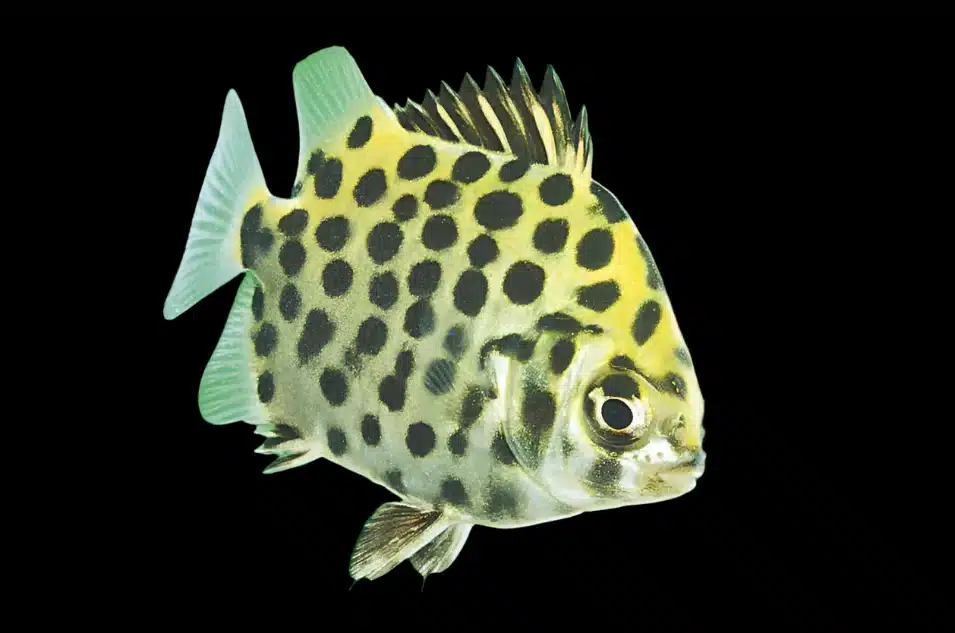
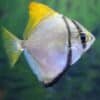
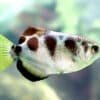
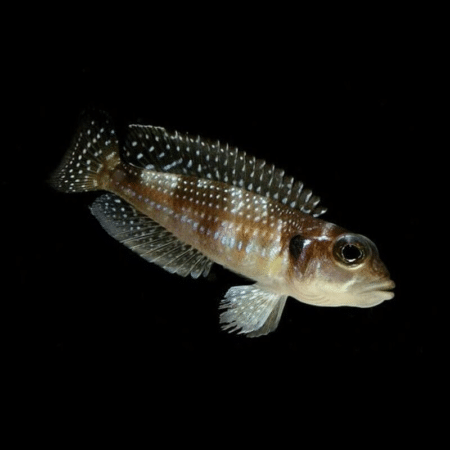

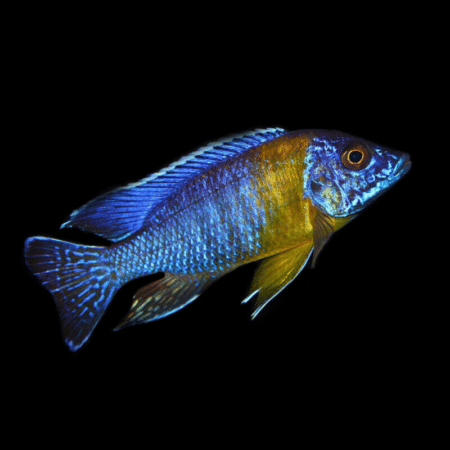





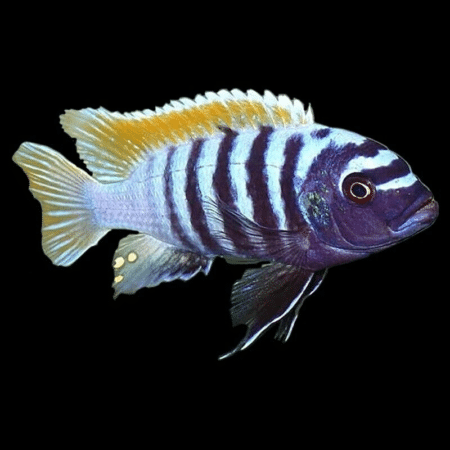
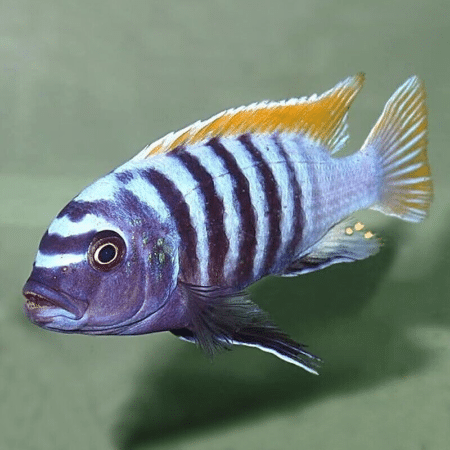
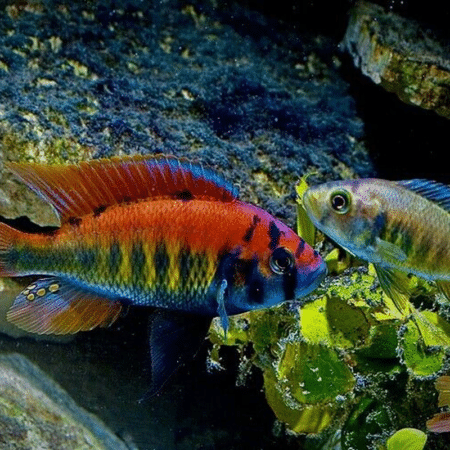


Emily Carter (verified owner) –
I recently added the Spotted Scat (Scatophagus argus) to my brackish aquarium, and I couldn’t be happier! After a few weeks of observing their behavior, I am absolutely in love with their unique patterns and playful nature. They seamlessly adjusted to the brackish environment and have become quite the stars of my tank!
I initially thought about getting a different species, but after researching, I realized that the Spotted Scat is more resilient and adaptable, making it a perfect fit for my setup. They thrive in a well-maintained tank with some hiding spots, and I’ve noticed them getting along beautifully with my other brackish fish.
One thing I recommend is to ensure proper water parameters with a reliable aquarium heater, as they appreciate stable temperatures. The shipment was quick, and they arrived healthy and active, showing no stress from transport. If you’re considering brackish fish, the Spotted Scat is a fantastic choice for any hobbyist looking to add some excitement to their aquarium. Just ensure you provide them with plenty of swimming space and the right environment for optimal health and happiness!
Emily Richards (verified owner) –
I recently added a Spotted Scat (Scatophagus argus) to my brackish aquarium, and I couldn’t be happier! These fish are not only visually stunning with their unique spots, but they also have such a graceful presence in the tank. I’ve had them for about two months now, and they’ve adapted beautifully to their environment. I made sure to invest in a quality aquarium heater to maintain the ideal temperature, which seems to have been a game-changer for their health.
Compared to other brackish fish I’ve kept, the Spotted Scat has a more playful demeanor, often interacting with the other fish and exploring the tank. They thrive in a well-maintained environment, so regular aquarium maintenance is crucial. I did have a brief scare during the first week when one of my other fish was nippy, but the Scat handled it like a champ and quickly established its territory.
I recommend this fish to anyone looking to enhance their brackish setup, especially if you’re an aquarist focused on creating a lively community tank. Just ensure you have the right equipment and a stable environment, and you’ll enjoy watching them flourish!